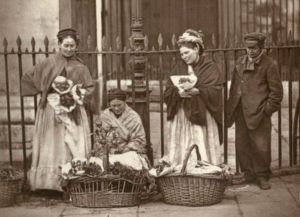Spring term is buzzing by. We have one hummingbird outside our house who has been sitting on a branch all winter and now he’s almost obscured by the leaves that have filled in.
Week 3 is about mapping. As I wrote in my thought piece on “minimal computing” in January, I use Google maps to help students develop several kinds of DH skills, from basic procedural knowledge for working with online primary source materials to content knowledge about the what, where, when, and how of literary and cultural histories.
Picking up on our Week 1 reading of Mrs. Dalloway, I sent my online students to the wonderful Georgia Tech students’ project, Mrs. Dalloway Mapping Project to get a feel for how plot points, settings, and other narrative features can be interpreted through maps. Originally I was going to ask my own students to map the novel, but the Georgia Tech example is so strong that I thought it would be better to try something else. So I asked students to then explore another site, Mapping Emotions in Victorian London , from the Stanford Literary Lab.
This site gave me an idea for my own students: to use the Library of Congress’s Chronicling America database to explore an emotion in America from 1789-1924 (the range of the database’s complete collection of newspapers), and then map the appearance of emotions in print in America over time.
Instructions for Mapping Emotions in America Project
I’m looking forward to seeing what my students come up with and hearing about their process. It’s been a great experience for me to break the steps down as clearly as possible. Procedural knowledge is a key skill set for C21 students. It’s one thing to create the maps myself through tinkering and my own tacit knowledge. It’s another thing altogether to step back and provide the steps so that online students can perform a lengthy series of steps toward a single end. We’ll see next week how they did!

